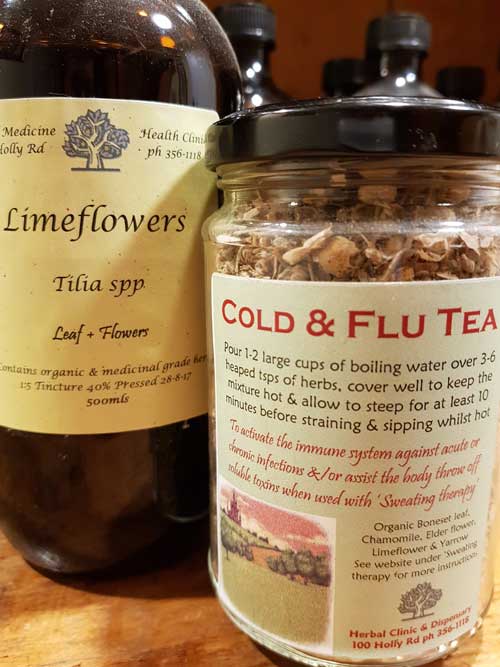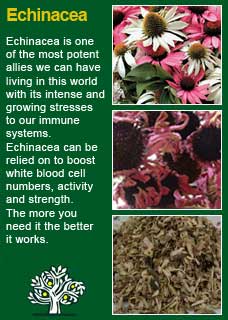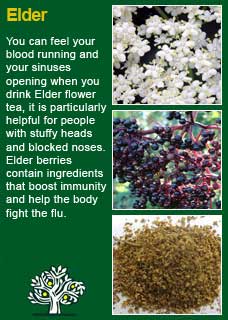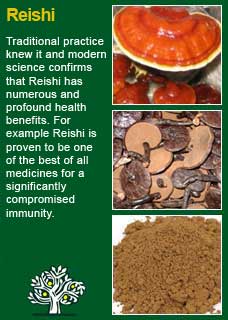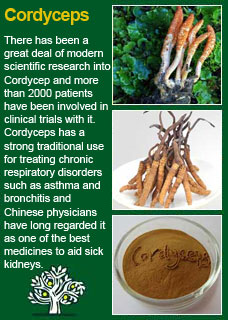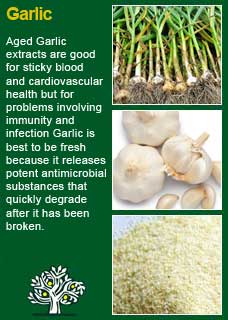
|
|
|||||||||||
| Our Pages ABOUT CONSTITUTIONAL MEDICINE
|
My dear old Gran, who passed away just before her 105th birthday in 2008, used to say “you can treat a cold and get better in 7 days, or do nothing and get better in a week!” Despite what myriads of marketers would have you believe, there really is no cure for the common cold, at least not yet and, as truly miserable as these viruses can make us feel, and with a few key caveats about to be discussed, maybe that's actually not such a bad thing... Some people who work in holistic health have wondered what might happen to all the people who would never otherwise take any kind of break from their high-intensity lives if and when we do finally get a cure for the common cold. All of us in this work have met more than a few people with serious diseases relating to their immune health who say something in their first appointment along the lines of 'I can't understand how this could have happened to me, I've never been sick a day in my life!' This is an important point; please don't skip over it just to see whatever this page has to offer short of a cure for the common cold. We run a big risk if we put ourselves above nature and evolution to always keep on going with drugs and/or willpower. Our immune system is like an army that needs to regularly fight against something or it can be unprepared for much worse threats to our health than a cold or flu.
Sweating therapy, also known as diaphoresis, works by fighting fire with fire by using the ancient mechanism of the therapeutic fever to your immune system's advantage. In a nutshell, it involves getting up a good sweat by using a very hot bath and then blanketing up and drinking a special cup of herbal tea. Sweating therapy is not something you do for fun, in fact it can be downright uncomfortable, but it works. I would recommend sweating therapy to an adult who was getting worse, rather than better, from a cold or flu after the first 48 hours,or for someone who was getting repeatedly sick and we were going to be building up their immune system at the same time. Detailed instructions on how to do the sweating therapy are written up here
Some of the best immune tonics include potent and proven medicines such as Astragalus root, written up in detail here, Echinacea root, more here, Elder berries & flowers, more here, Garlic, more here, and the mushroom medicines Reishi, here and Cordyceps here. In practice, we commonly use several of these medicines at the same time. For a more detailed overview on the important subject of immunity, read here If this is you, I recomend you to get and use a special herbal throat formula as written up here, you might also want to take a daily probiotic throat lozenge (e.g. from one of the 'Blis' products) If this is you, start up a regular practice of steam cleaning your sinus passageways with a simple procedure that you can do in a minute as described here Further to that, and especially if you are a person who gets recurrent sinus infections, you can take things to the next level by using a nasal douche with saline water. Search for 'nose-pipes' or 'neti-pots' and you will see that these are readily available and be assured it's a lot easier to do than it looks!
Children are not born with any kind of immune system whatsoever. They have no ready-made white blood cells but rather the baby initially borrows their mother's defences and then gradually develops their own immunity through exposure to the world with its myriad micro-organisms. The only way for a child to develop a strong and healthy immune system is to eventually learn how to fight its own battles and win and so it is not inherently bad for a child to get sick so long as they recover fast and well. Where we have a serious problem is when the child is getting sick again and again but their immune systems are not developing strongly enough to quickly and convincingly win those essential battles.
So how do you know if it is a problem in the first place? If the child has any eczema or asthma then it is highly likely that food allergies or intolerances are playing a key role. There are other tell-tale signs that should make you at least consider the possibility including getting a lot of sore stomachs or upset bowels, dark rings under the eyes or cracks at the corners of the mouth. The whole subject of food allergies and intolerances is rife with myths and misconceptions and its diagnosis and treatment must be undertaken with great care. If you think this may be a core issue for your child, read more here
The old cultures of medicine understood fever as a necessary rite of passage for the body to throw off the contagion. In traditional herbal medicine, they would frequently help a person break out of sickness by bringing a fever on! How we still do this in modern herbal medicine practice is written up in detail here However, in modern times, there is much fear of fever. Parents in our society are encouraged by society and instructed by their doctors to give fever-reducing drugs such as paracetamol or ibuprofen (marketed under different names and in various syrups etc.) to a child who is even beginning to run a high temperature. These drugs most certainly make the child more comfortable right now. They do so by turning off the fever mechanism, but at what cost? When the immune system recognises there is an invasion from a pathogen, one of the main methods it has to activate and mobilise its immune 'army' is to cause the body temperature to rapidly rise. This is called the 'fever mechanism' and it is no accident or mistake of evolution. Rather it is an intricately evolved, powerful method of defence to help our immune systems win their battles. Each small increase in temperature results in a massive increase in white blood cell production and, at the same time, the existing immune cell 'troops' become increasingly agitated, activated and aggressive towards the invading organisms. Fevers are our body’s way of activating our immune systems. Turning them off can make a child or person more comfortable right now, but can lead to the illness becoming more chronic and taking much longer to resolve. There is also a real concern that the great increase in allergies and auto-immune conditions is as a result of our children not learning how to fight and win their battles at an early age. The immune army is evolved to fight. If it is repeatedly switched off, or replaced with antibiotics, it may start to identify foods or other harmless environmental factors as the enemy or worse, decide that some tissue or gland within the body needs to be attacked (auto-immunity)
Therefore, before we talk about how to manage and support a fever, we should ask the question, 'if we will not try to stop a fever, is how can we keep a child or adult safe from harm?' The first part of the answer is that we need to understand how to use a thermometer. If we are able to keep a child or person resting and hydrating and we know how to use the numbers, we will able to help them work through the process as quickly as possible. Digital thermometers are to be recommended; they are fast, accurate, inexpensive and widely available. They will quickly give the exact number without the uncertainty that comes using an old-fashioned mercury thermometer if a person is not well-practiced with it. Our normal body temperature is around 37 degrees Celsius or 98.6 degrees Fahrenheit. A safe and effective raised temperature to help the immune system fight an infection sits up at around 39 degrees Celsius or 102.2 Fahrenheit. If the child or person gets to 39 degrees (102+ Fahrenheit) and hovers around that point for a while then things will usually get better very quickly indeed, even over-night. If the temperature goes down but then has to go back up more than once then don't worry, this is perfectly normal. The immune system is becoming 'activated'. Each time the temperature rises you can be certain the army is both growing in numbers as well as fighting hard to win its battle. A child may also safely get up closer to 40 degrees Celsius; 104 degrees Fahrenheit, however they will be feeling very uncomfortable at this level and will benefit from being cooled down with cool, wet cloths to the back of their neck &/or their forehead. If you want to lower the temperature further or faster, then put a cold, wet flannel on their feet as this will usually take their temperature down by half a degree or more in as little as a minute or two. The safe maximum level for a fever is 41 degrees Celsius or 105.8 Fahrenheit. Children hardly ever get that high with colds, flus, ear infections etc. but again if it is getting above 40 degrees it is wise to ease their discomfort by helping them cool off naturally, with cold, wet flannels to their neck and/or feet. Febrile convulsions do affect a small percentage of all children but if a child is genetically prone to febrile convulsions then they will get them with any quick rise of temperature, whether it goes up a little or a lot. A convulsion that happens without a fever or an infection most certainly needs medical attention, but febrile convulsions are not actually dangerous, they just look really scary. Something that does need antibiotic treatment is bacterial meningitis. There may not actually be a very high temperature with this, but a key sign is a very stiff and sore neck. If the child cannot touch their chin to their chest without a lot of pain, then this is an indicator to seek medical attention immediately. The best part of modern medicine is its emergency care for the badly injured or dangerously sick. There are also going to be other times, when a child or adult has a fever, that they are going to be too sick to trust that they will be safe to remain in home-care and to let Nature take its course. The safest way to attend to any illness is to carefully observe whether the child or adult is getting better or worse over time. If, overall, even with some relapses and even if it takes longer than we would prefer, they are getting better, then there can and should be trust in the innate healing process. If they are getting worse then it is time to seek further help.
There are a number of herbal medicines that can be of great help during a fever. Rather than suppress the fever mechanism, they support the body to move through it faster and more easily. The following is a combination of herbs that has frequently been seen to help
The dosage to have a pronounced effect is to pour one to two large cups of freshly boiled water over 3-6 hpd tsps, or about 4-8 grams of the herbs. Cover and allow to steep for a good 10 minutes, longer is ok too. When ready to drink it, strain and sip whilst hot. The taste of this tea is strong but acceptable, though it would also be ok to add some honey if desired. It can be safely taken by anyone from any age though a young child may only need a few sips to get the therapeutic effect. If there is a current fever it may be expected that sipping some of this tea will bring the fevers forwards into a more profuse release of heat. In other words, they may feel temporarily hotter and may sweat more, followed by things easing back after a short while. Any of Chamomile, Elder flower, Limeflower (Linden flowers) or Yarrow could be used by themselves to achieve the same effect. Catnip herb is also very good to help a young child with a fever.
In our practice, if a child or adult has become repeatedly sick and we need to help support their immune systems at a deeper level, we usually give some combination of the extracts of Echinacea, Astragalus, Elder berry and Licorice root mixed together. For example
To make 210mls, which will easily fit into a 200ml amber pharm round. Bearing in mind that the following dose recommendation is based on tinctures that we make in our clinic from dried organic material, so a different preparation by a different company or practitioner might need a higher or lower dose. For an adult suffering from fever who needed immune health support, I would give 10 mls three times a day for one week, i.e. until finished. For a child over 5 i would use half that dose, for a child from 3-5 I would use about 3 or 4 mls three times a day and for a child from 2-3 about 2 or 3 mls, three times a day and a child under two just 1 or 2 mls per dose. We don't use immune tonics with the expectation that they will stop a child or adult ever getting sick, what we do want is that they can fight and win their battles naturally, without fever-lowering drugs. In fact, in many cases that have been met, where there was a history of chronic illness and repeated infections, the process of getting another infection but then working through things naturally is often the turning point to their breaking the cycle of sickness. With children, there is often a rather dramatic improvement in the health, behaviour and development at this point. A great many others have observed this same phenomenon themselves. It takes a lot of courage for a parent for whom this is all new, and completely against the mainstream advice they have previously received. It is also so much harder because they will see their child suffer somewhat more, at least at first, than they would if they just gave them the drugs, not an easy prospect by any stretch of the imagination, and the first time is always the hardest. All that matters is whether this approach is safe and whether it actually works. It is safe, and it does work. Children and adults can always develop healthy immune systems, but they do it by working with Nature.
Please understand that I cannot personally advise you without seeing you in my clinic. |
|
|
© 2011 R.J.Whelan Ltd



